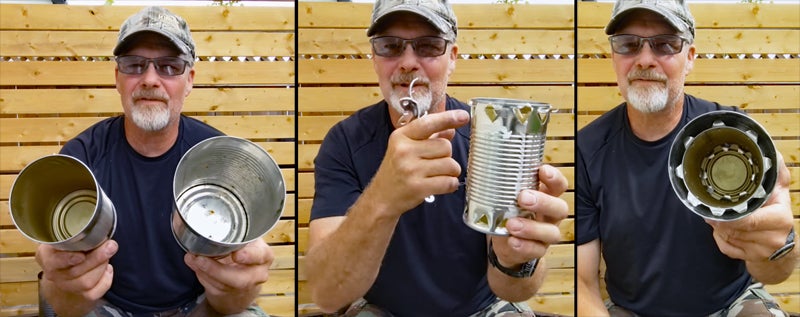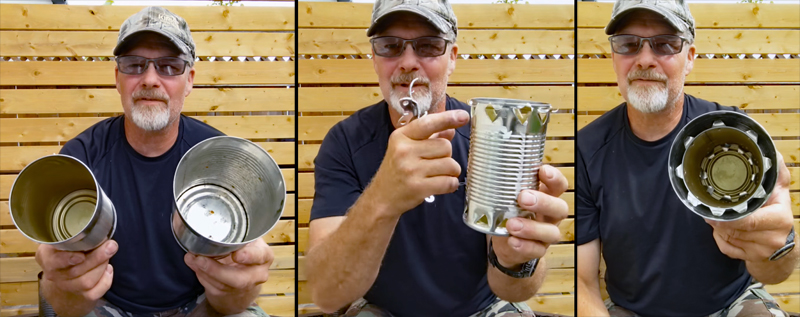DIY Double-Wall Rocket Stove – AllOutdoor

Here’s a video showing a different way to make a tin can rocket stove. He starts out by discussing the most common method, and its drawbacks — mainly, its tendency to set other stuff on fire.
I’ll be honest here: So what if it gets hot on the bottom? Remove burnable stuff from where you set the stove, and no worries. But if you want to safely set the stove on top of a table, stump, flat-sided log, or some other flammable surface, it could be an issue.
In the spirit of keeping things simple, he ditches the drill and uses nothing other than a can opener and a knife to make a double-wall stove.
Start with a 48-ounce can for the exterior and a 24-ounce can for the inside. Open one end of each can — making sure to leave the rim on the can.
Next, use the “poky” can opener to put 8 to 12 triangular holes in the sides of the larger can’s base. He makes extra work for himself by prying the steel tabs back up after he pushes them down with the can opener… seems more sensible to just not push the tabs down so far in the first place.
Either way, the point is to leave them up a little so the smaller can can sit on top of the tabs.
You may want to skip portions of this video… he talks way more than necessary.
Next, he punches similar holes around the bottom side of the smaller can, then makes another series of holes around the top of the can, pushing the steel tabs out instead of inward.
He follows up by using a knife (after he said he was only going to use a can opener. Scandalous!) to cut some slots in the sides of the smaller can.
After that, he says you have a choice… you can punch triangular holes around the top of the larger can, pushing the metal inward to act as a pot support for small cans or pots, OR you can leave the top of the can unpierced and use a pot standoff to support pots. This latter option allows you to feed twigs into the fire while your pot is resting atop the stove.
He follows this by firing up both versions of his double wall stove, and after a while he shows that although they do place a slight char on the table surface, they’re not likely to set it afire.




